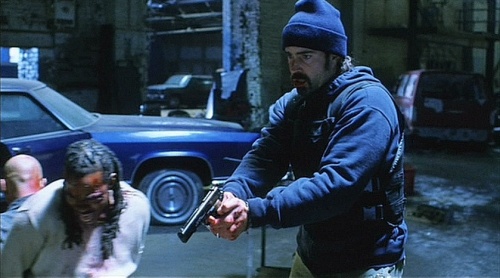Crime is on the upswing. In some cities, violent crime has spiked. Just as important, the public has tired of many of the late 20th Century crime reduction strategies. Strategies and tactics such as saturation patrol, zero tolerance policies and random check points are only modestly effective in gaining a short-term reduction in criminal activity and nearly always generate public dissatisfaction. Most of the 20th Century police tactics and strategies only displace crime; temporarily or spatial. The bad guys either wait or they leave the area until the police and community tire. This is not crime reduction, this is crime displacement.
The issues associated with crime displacement do not mean all 20th Century policing should be discounted. Indeed, part of the solution is a return to a number of basic policing function along with incorporating new ideas and technologies. The following is a brief synopsis of potential ten crime reduction strategies for the 21st Century.
- Demand Adherence to the Concepts of Reasonable Suspicion and Probable Cause
Walk through your organization and ask the first ten sworn personnel you encounter to define Reasonable Suspicion and Probable Cause. You will find that more than half are either unable to define both, or confuse the two. These are the two great pillars of American policing, yet many officers do not understand them. If you can get every officer in your organization to thoroughly understand these two concepts you will: Make better arrests; have a better filing and prosecution rate; decrease use of force; decrease citizen dissatisfaction; and, decrease civil actions. This is medium to long-term strategy that will decrease crime. - Create a Serial Offender Task Force
Many agencies are amassing a tremendous amount of data. Yet, whenever there is a “spike” or upward trend in crime, they fall back on short-term displacement strategies such as saturation patrol. Managers who do this are only connecting crime by its spatial and temporal factors. However, if you look closely at the data and began to connect crime by Method of Operation, along with the time and place factors, you will see serial offenders. It could be gangs, robbers, burglars or any crime. Once you determine you have a serial offender, target that offender not the community. Targeting specific offenders, even if unknown, is ultimately more effective that tactics like saturation patrols which target the community. An effective Serial Offender Task Force would include a core team dedicated to ferreting out serial offenders from the data and then assembling the necessary expertise to target same.
This type of fluid task force can then select from a number of strategies. The first strategy when targeting serial offenders discovered through an analysis of crime data is, however, the re-investigation of all prior reports. Suppose you discover a serial offender who commits street robberies. Go back and re-investigate all of the crimes: re-interview the victims and witnesses and search for overlooked evidence. This first strategy ensures that all the data you have included in your initial assessment is good and will likely discover additional data about the offender. The serial offender task force is then able choose the best strategy to locate and arrest the offender.
- Focus Resources on DUI Enforcement
This is not an endorsement of check points. Check points target the community, not the offender. Go to your traffic officers or whomever has the records and look at ten random DUI arrests. How many of them have criminal histories beyond DUI? At a minimum, DUI drivers are irresponsible individuals who require an intervention by the criminal justice system. Furthermore, you will find that many of the DUI drivers you arrest have committed other criminal offenses.
To institute this strategy, first return to the number one recommendation in this paper. Ensure all of your officers know what gives them a reasonable suspicion and/or probable cause to make a traffic stop. Ensure they all know the objective symptoms of DUI. If you have the resources, field DUI experts with the mandate to mentor your regular patrol staff. Make DUI arrests a command priority by explaining to your field personnel that it is also a crime reduction strategy because many DUI offenders also have criminal backgrounds.
- Focus on Domestic Violence
As with DUI, this is a reprehensible behavior and, like DUI suspects, you will find that people arrested for domestic violence have also committed other criminal offenses. Train your field officers to conduct thorough preliminary investigations, to gather good statements, to gather evidence such as photographs and medical treatment and to document the primary aggressor. Develop the necessary field and detective expertise to make these arrests stick. - Know Your Community Problems
Incorporate community issues in your crime data. As an example, does your crime data include vacant lots? Or apartment buildings in serious disrepair? Can your crime analysis personnel overlay community issues with crime problems and potential partners? Can you systematically identify and then prioritize community problems? Do you assign officers to work on these problems? Do you hold people accountable for solving problems? You can’t do everything, but if you had this type of data you could make a list of the top five community issues based on their proximity to criminal activity and address those five problems. - Know Your Potential Community Partners
Do you know every non-profit, church, youth group or government agency that works in your jurisdiction? Do you have a comprehensive list of these organizations? Do your personnel routinely attend meetings with these organizations? Do your field, detective and support personnel know this information? Can you overlay the location of community groups and organizations with crime data? You cannot form partnerships until you know all your potential partners. - Form Partnerships
Focus on what your agency does well and form partnerships with your community organizations to solve the problems you do not do well. Based on recommendations five and six, you should know who can help and where you need help – ask for help. - Incorporate “What do you Think?” in Your Organization and Leadership Style
If you have all the answers, you should be telling fortunes. Most police officers are creative, hardworking and intelligent human beings. You hired them because they could do the job. If you are not engaging them and asking for their creative intelligence, you are losing the opportunity to employ brain power every minute of every day. If you have supervisors and/or managers who are not asking your line personnel to step up and contribute their creative intelligence, your supervisors and managers are organizational road blocks to problem solving. This is the simplest and most effective way of turning an organization around. Yet, because of the historical management and leadership styles of policing, this may be the most difficult to adopt. - Talk to Everyone
Police work is about talking to people; It always has been and always will be. It is about interviewing victims and witnesses, developing informants and exchanging ideas with the public. Remember: All evidence is testimony. Someone must introduce the fingerprints into court. Someone always testifies. Human communication is essential to good policing. Demand that all personnel have two casual conversations for every official conversation. Internally, for every work related conversation you have with a subordinate, force yourself to talk to two people about non-work related issues. How are their children? How was that trip? Open the lines of communication internally by requiring your supervisors and managers to follow your lead. Externally, demand your field personnel do the same. If they keep a record of their daily activities, have them log their casual conversations, also. For every traffic stop they make, require them to talk to two people unofficially. Stop and ask the business owner about business. Engage the kids in the park playing basketball. Complain about the weather with the homeless man. It does not matter the substance of this informal communications. What does matter is the ramifications. Not only will community satisfaction with the police increase, but people will open up – someone will tell the beat cop who complained about the weather, who committed a homicide last week. The community often knows, you have to get them to tell you. - Build a Community Network
The last six recommendations are the foundation for developing a community network. If you accomplish those recommendations, you will have the means to pick up the telephone, send an email, walk across the hall, drive downtown or attend a meeting that will prevent and solve problems, and reduce crime in your community. People will contact your agency with critical information. You will know about potential bad things before the local radio station. You will have the means to mobilize community support and the organization’s brain power. You will be in the 21stCentury.











